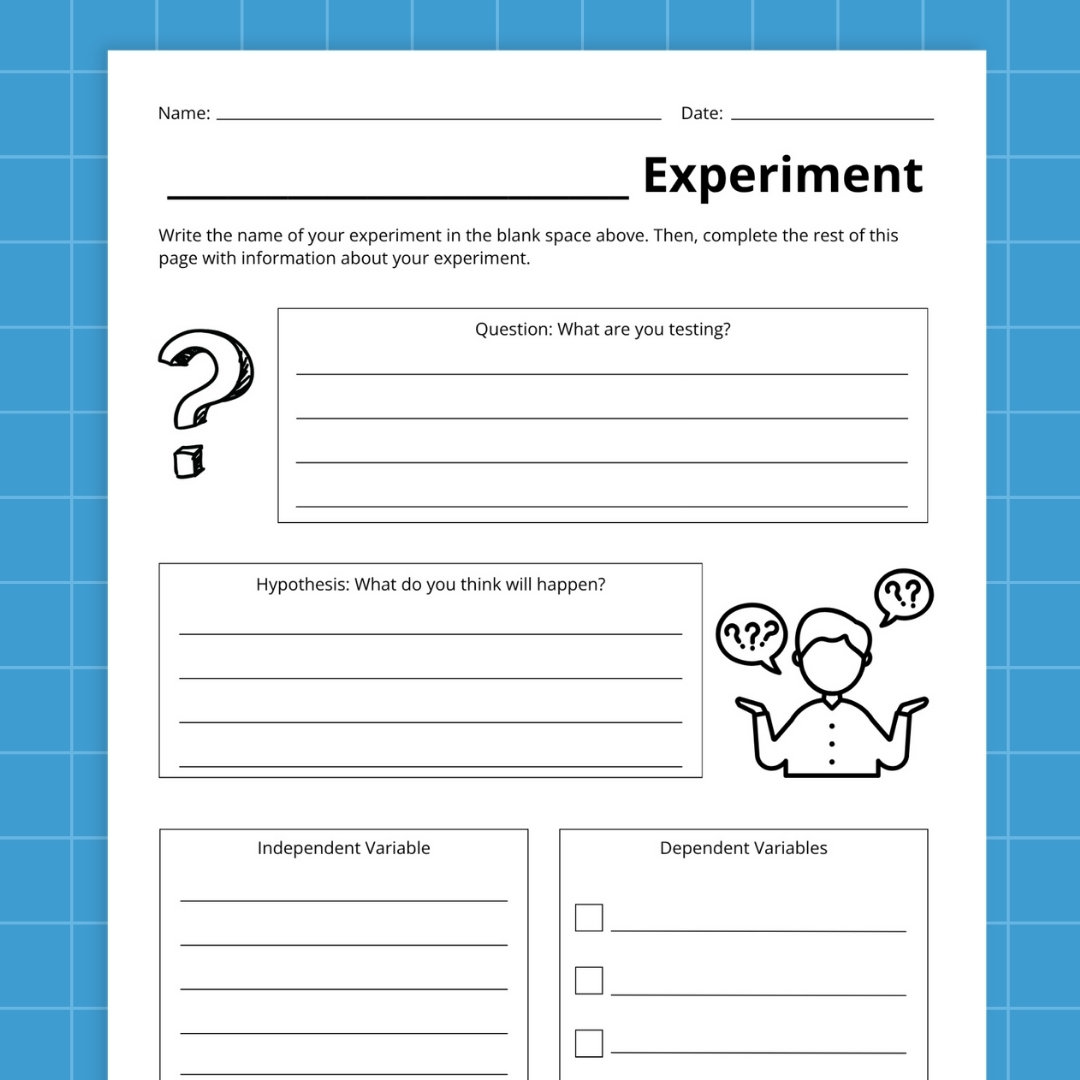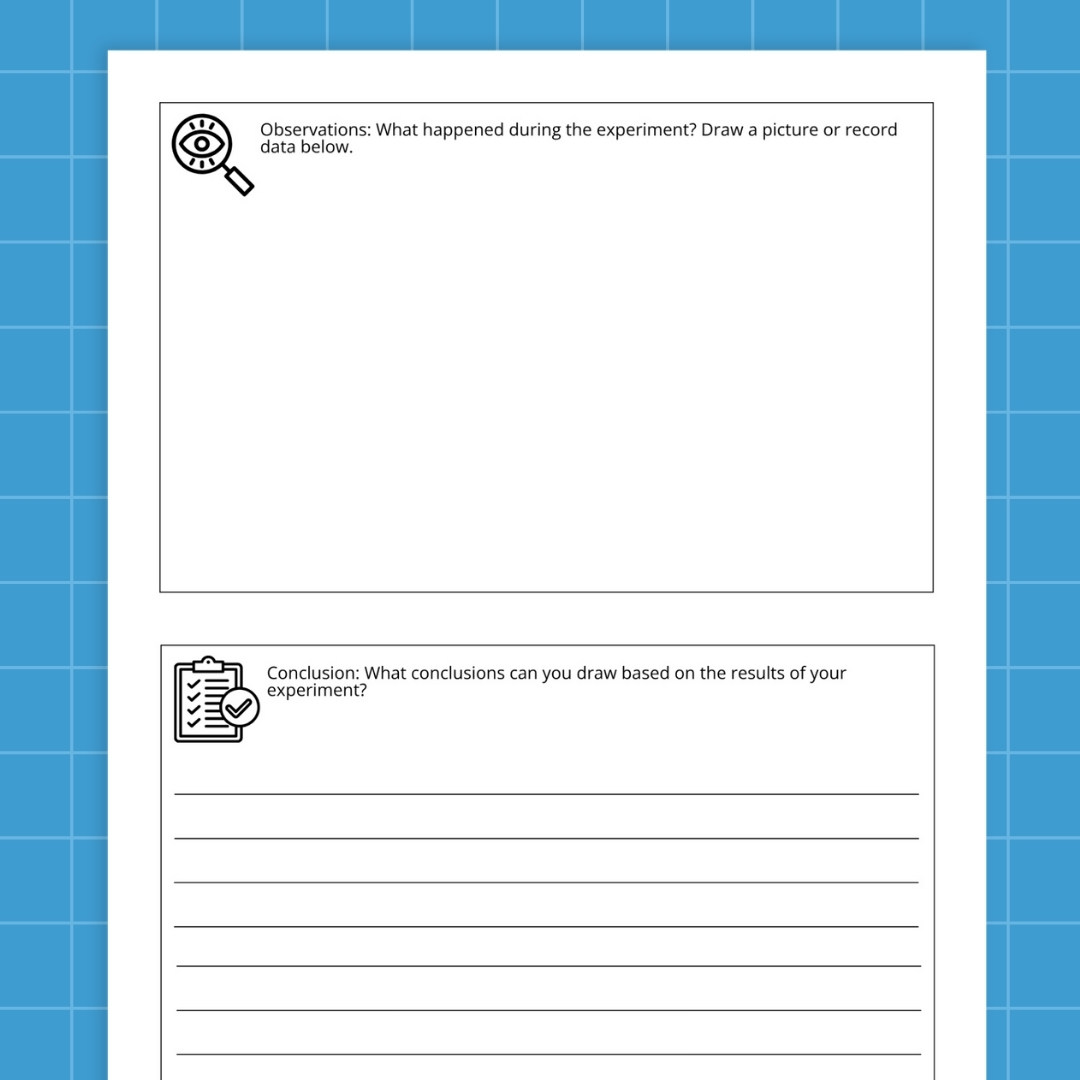Teach the basics of the scientific method with this free printable science experiment recording worksheet! It’s perfect for elementary-age kids but basic enough that you can really use it at any age.
Science Experiment Recording Worksheet
Here’s what’s included in your downloadable worksheet:
How To Use These Experiment Recording Sheets With Your Students
The first time you use these recording sheets in your class, walk students through the process together using these tips.
Question
The first thing young scientists need to determine is exactly what they’re testing. The question must be something specific that can be answered through a controlled experiment with measurable data. These questions usually start with words like “How does …” or “What is the effect of …”
Strong question: “What is the effect of watering bean seeds with salt water?”
Weak question: “Is salt water bad for plants?”
Variables
Experiments include two types of variables:
- Independent variables are the things you’ll change as part of your experiment. In the example of the bean plant experiment, the independent variables could be the different types of water you give the plants (fresh water, salt water, etc.).
- Dependent variables are the measurements you take as you record results. In this experiment, that could be plant height, color of leaves, or other indicators of plant health.
Hypothesis
The hypothesis is what you think will happen. This is kind of like guessing, but students should use what they already know about the topic to make an educated guess rather than a stab in the dark. A hypothesis is often an if/then statement: “If we water bean seeds with salt water, the seed will not sprout.” (Remind your students that it’s OK if their hypothesis turns out to be wrong!)
Observations
Good observations are specific and measurable. It’s important to be objective, looking at what actually happens instead of what you think or hope will happen. The more notes you make during the experiment, the better you’ll be able to explain your conclusion.
Example: “After 3 days of watering a bean seed with salt water, it began to sprout. By the 5th day, the leaves had started to unfold. On day 6, the leaves turned yellow, and on day 7, they fell off. By day 10, the stem had withered and the plant appeared dead. Meanwhile, the bean seed watered with fresh water sprouted on day 3, grew leaves on day 5, and the stem reached 4 inches above the soil on day 10.”
Conclusion
Finally, students use the notes they made during their observations to draw a conclusion. This conclusion should state whether the hypothesis was correct or incorrect and attempt to explain why. Students shouldn’t speculate, though—they should only use the data collected during the experiment.
Example: “Salt water did not stop the bean seed from sprouting. However, the seed soon lost its leaves and the stem died back. The seed itself turned black and mushy. We conclude that while salt water does not stop a bean seed from sprouting, it does not support healthy growth in the long run.”
Once you show kids how to complete the various sections on the recording sheet, they can use it with any kind of science experiment!
Grab your free experiment recording sheets to help your class master the scientific method!

Get your free printable today! Just click the button, then fill out the form on this page with your email address. Your download will be available right away!
Looking for ways to use this science experiment recording worksheet? Check out these Easy Science Experiments Using Materials You Already Have On Hand!
View the original article and our Inspiration here


